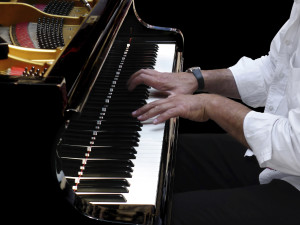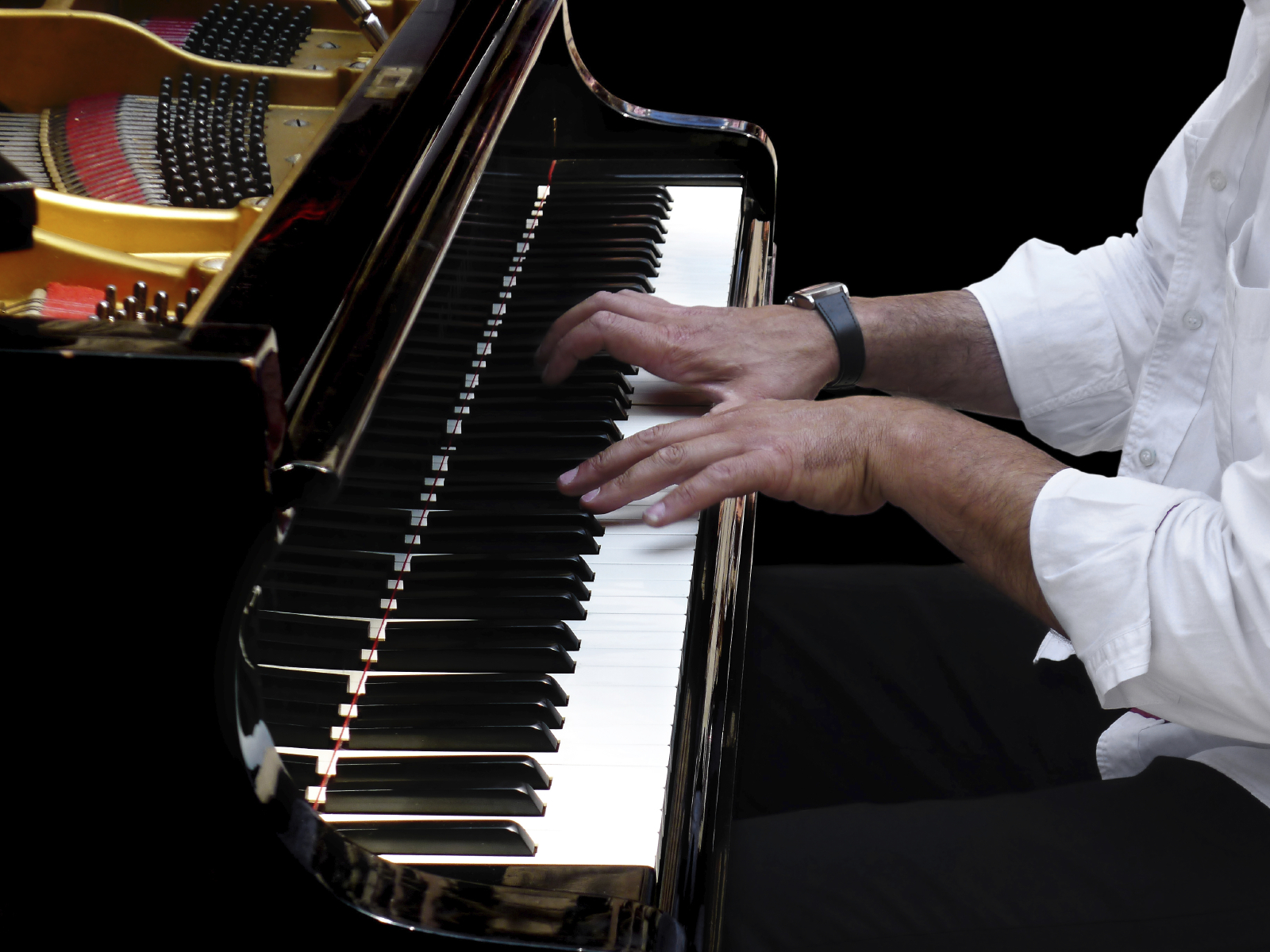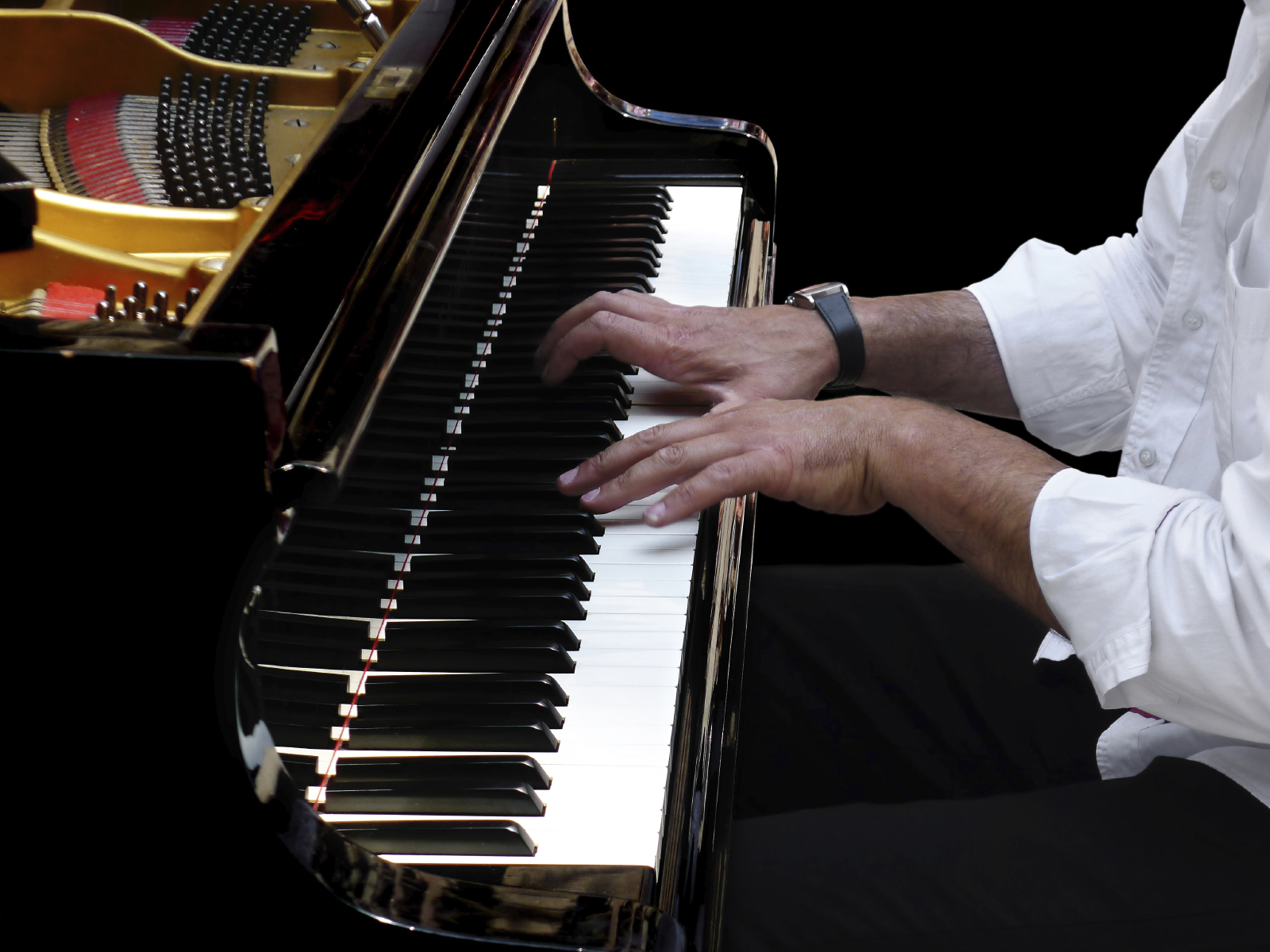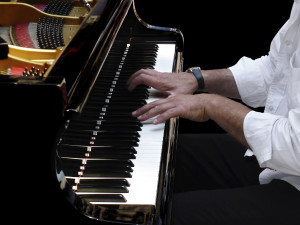 There was a discussion a few years ago on my Facebook page about Church music. My parish, Holy Comforter-St. Cyprian in Washington, D.C., was featured on EWTN’s nightly news (see video below); the discussion centered on that report.
There was a discussion a few years ago on my Facebook page about Church music. My parish, Holy Comforter-St. Cyprian in Washington, D.C., was featured on EWTN’s nightly news (see video below); the discussion centered on that report.
Among the many forms of music we use here at my parish, gospel music is predominant at our 11:00 AM Mass. While many of the comments on the Facebook page were encouraging and supportive of this music, there were still a significant minority that spoke of gospel music as being inappropriate for Catholic liturgy and of it not being sacred. Chant, polyphony, and traditional hymns were held up as sacred, while gospel and some modern forms of music were labeled “not sacred,” and/or inappropriate for Catholic worship.
While everyone is certainly entitled to his personal preferences, is there really a definitive answer to the question, what is sacred music and how is it that some forms have come to be more widely regarded as sacred than others?
The answer to this question is a little more complex than most people realize. With the exception of chant, almost every form of music that is today regarded as sacred initially had a stormy reception in the Church before being admitted to the ranks of music commonly called “sacred.”
That music is controversial in the Church is nothing new, as we shall see in this modest survey that I make of the history of music in Catholic liturgy. Some of my sources are listed at the end of this post, but it is really the product of many years of reading and studying.
On some level, I hope to provide some perspective on the claim that is often made today that certain modern forms of music are inadmissible because they are not “sacred.” In no way do I intend to approve of all forms of modern music nor to encourage the admission of all of them into the liturgy. But it is worth appreciating that the definition of “sacred music” has changed over time. New forms have been admitted— sometimes reluctantly—to the exalted class we refer to as “sacred music.”
Here, then, is a brief look at the history of Church music in terms of what has been considered sacred and what has not.
I. The early, pre-Constantine period: Chant reigns supreme – While little if any music survives in written form from the earliest days of the Church, it seems clear (as Johannes Quasten records) that the leaders of the early Church (the Fathers and bishops) preferred monophonic music. This seems largely due to the association of harmony with the excesses of the pagan world and pagan worship.
Frankly, there was in the early Church a very persistent theme that music itself was problematic. Many ancient bishops and Fathers of the Church barely tolerated it, sought to limit its influence, and/or were deeply suspicious of any singing at all.
In his essay “On the Theological Basis of Church Music,” Cardinal Ratzinger; drawing from sources such as Pope Gregory the Great, St. Jerome, Gratian, and even as recent as St. Thomas Aquinas; describes the rather negative opinion in the early Church of any music involving instruments, harmony, or anything deemed “theatrical.” He writes,
Instrumental music, understood as a Judaizing element, simply disappeared from the early liturgy without any discussion; the instrumental music of the Jewish temple is dismissed as a mere concession to the hardness of heart and sensuality of the people at that time. What the Old Testament said about music and worship could no longer be applied directly, it had to be read by them allegorically, it had to be spiritualized (Ratzinger, “On the Theological Basis of Church Music,” quoted from Collected Works Vol XI, pp 425-432).
Summarizing the views he had received from the earlier Church, St. Thomas writes, “In the praise of God, the Church does not employ musical instruments … lest she appear to be falling back into Jewish ways” (Summa Theologica II, IIae, q. 91 a 2 ad 3).
Cardinal Ratzinger continues,
Analyzing the texts, not infrequent in the Fathers, which are critical of music or even openly hostile to it, one can clearly identify two constant and governing factors:
A. In the first place there is the one-sidedly “spiritual” understanding of the relationship between the Old and New Testaments … [So] Christian liturgy … took on a more or less Puritan form. … The idea that God can only really be praised in the heart means that no status can be accorded to music … In Christian worship … music must be relegated to a secondary level. Augustine is a splendid example of this. His sensitivity to music causes him much torment because his mind is dominated by a spiritualizing theology that ascribes the senses to the Old Testament, the old world; he is afraid of “sinning grievously” when he is “moved more by the music then by the reality to which the singing refers” … and would prefer “not to hear singing at all.” Fortunately his rigorism is dampened when he recalls the profound stirring his soul experienced when he first heard Church music in Milan. [He thus adopted a view of music later stated by St. Thomas, which held that among the reasons for Church music was that] “Thus the minds of the weak be more effectively summoned to piety.”
B. The second group of ideas that stood in the way of a positive the valuation of Church music … is put in a nutshell in Thomas’ fundamental article on the praise of God, where he says that vocal worship is necessary, not for God’s sake, but for the sake of the worshiper (Ibid).
Cardinal Ratzinger argues in the essay that this tended to lead to a utilitarian view of Church music as necessary to some degree, but somehow less than ideal. He reflects that this created a barrier to any satisfactory theology, not only of Church music, but of all prayer whatsoever.
He also adds (in a later essay) another reason for the restrictive notions about music in the early Church:
To the extent that it distanced itself from the Semitic world, the development of Christological art songs [also] threatened more and more to turn into an acute Hellenization of Christianity … The fascination of Greek music and Greek thinking [now excluded] … so that the new music rapidly became the domain of Gnosticism … For this reason [too] the Church immediately and rigorously rejected the poetical and musical innovation and reduced Church music to the psalter … This limitation of liturgical singing which gradually began asserting itself from the second century … led to a forbiddance of private song compositions and noncanonical writings in liturgical services. The singing of the psalms also came to be restricted to the choir whereas others “should not sing in church” (See canon 59 of the Synod of Laodicea 364 AD) (Ratzinger, Ibid, p. 505).
Thus music in general, given its Semitic and pagan associations, was widely resisted in the early Church and tolerated only in limited ways. Music with any harmony was altogether excluded and would not reappear until the Late Middle Ages.
Another reason that the early Church seems to have favored non-harmonic singing was somewhat rooted in the cosmology of the time, wherein there was an emphasis on the unity of all things. Whatever diversity was discovered was viewed as coming from the one hand of God. Monophonic music seemed to better express this unity, at least to the ancient Christian mind.
This cosmology of unity still finds its expression in the way that most Prefaces in the Mass are ended. The Latin text speaks of the multitude of the choirs of angels, joining with the voices of the many saints (cum Angelis, et archangelis, cum Thronis, et Domininationes … et òmnibus Sanctis). And yet despite the vast multitude of voices, at the end of the preface it says that they all sing “as with one voice saying” (una voce dicentes), “Holy, Holy, Holy, Lord God of hosts.”
And so at the earliest stage, sacredness was associated with what we today call chant. To the ancient Church, harmony was widely considered to be secular, even pagan.
II. The Church after Persecution: Chant develops – The earliest chants were quite simple and largely syllabic (one note per syllable); there were few elaborations. However, after the Edict of Constantine (321 A.D.) as the Church came out of a more hidden worship, the use of large, cavernous buildings started to influence the singing. Cantors began to elaborate on the chant, making full use of the echoes in the larger, basilica-like buildings. Vocals became increasingly melismatic (multiple notes per syllable) rather than syllabic, especially during festival seasons. Syllables (such as those in the word “Alleluia”) began to be extended longer with more and more notes.
Singers also “yielded to the spirit,” and the long melismata became a kind of ecstatic “singing in tongues.” Though at first any elaboration was resisted, certain chants did begin to develop in some areas. As these melodies became increasingly complex, they were written down and collected by Pope St. Gregory (among others), hence the modern name, “Gregorian chant.”
As these chants became more and more elaborate, their sacredness was only gradually conceded. In fact they became so complicated that the faithful in the congregation, who were already being discouraged from singing at all, had great difficulty joining in most of the chants. For this reason, special choirs called scholas were formed.
III. The High Middle Ages: Harmony enters – The next major development in Church music took place during the High Middle Ages, generally speaking in the 13th century. The first developments of harmony occurred in the musical schools in France, particularly around Paris. It was here that we saw the first widespread introduction of harmony into Church music.
Several factors influenced the introduction of harmony. First, there was the reintroduction of Greek philosophy and some of its views back into the Western world through scholasticism.
Among the Greek notions there was a cosmology that spoke of the planets orbiting the sun in perfect circles, each of them ringing out a different tone and creating a beautiful celestial harmony in the heavens as they did so. This was the “music of the spheres” and the idea of a great and beautiful harmonic sound in the heavens. Thus the association of harmony with the sacred began to seem more plausible in the minds of Christians.
The first experimentation with harmony seems to have been singing the Gregorian melodies and adding a hollow harmony of a fourth or fifth. Sometimes this involved several singers singing the words in those harmonies. Other times the harmonizers simply “droned” in the background, somewhat like bagpipe drones.
Architecture was another factor that influenced the harmonies. The soaring new cathedrals with their vaulted ceilings that began to dot the landscape of Western Europe seemed to demand more soaring music. These cathedrals were the skyscrapers of their day.
As harmony began to sound more pleasing to the ears, scholars worked to study it using, of all things, the Pythagorean Theorem to mathematically set forth the harmonic scale. Thus mathematics and music came together to quantify a kind of music theory. Gradually, as the years just prior to the 16th century ticked by, we came to have what we know of today as the 12-tone scale.
The introduction of harmony (as with most things musical) in the Church was not always without controversy. Some thought that it made the words harder to understand, a complaint that would plague polyphonic music in its early stages.
Nevertheless, as a general rule, the new harmonies from the Paris school swept through Europe to widespread acclaim. People flocked to the cathedrals to hear this splendid new music.
IV. Late Middle Ages to Renaissance: Musical revolution and growing crisis for polyphony – It is hard to describe what took place in music from the late 1300s to 1500 as anything less than revolutionary. The modern harmonic scale as we now know it came into full realization. Harmony went from two-part, to three-part, and then to four and more parts, amazing listeners everywhere.
The incredible development of music during this period paralleled the remarkable developments in painting: increasing use of shadow, light, perspective, and depth. By the early 1500s, Renaissance polyphony was in all of its glory. Composers such as Isaac, Lassus, Palestrina, Victoria, Tallis, and Byrd brought this art form to an amazing richness.
But the music was not without controversy. There were two main problems with this new style called polyphony.
The first problem was the intelligibility of the text. With multiple harmonies being sung, the Latin text, often staggered across many parts and voices, became harder and harder to understand. Clergy in particular complained of this, arguing that the sacred text was taking a backseat to musical flourishes. In addition, the “theatrical showiness” seemed secular to many.
The second troubling issue was that many of the composers of the day drew from secular melodies that were often heard in taverns, in theaters, and on the streets. They would often take these recognizable melodies and set them as a cantus firmus (musical theme or foundation) of sacred compositions, including the parts of the Mass.
Heinrich Isaac, as early as the 1400s in his Missa Carminum, drew from many of these tavern songs. But perhaps the most egregious example of this, and something that almost caused polyphony to be banned completely from the Catholic Church, was a Mass composed by Orlande de Lassus.
The Mass in question was his Missa Entre Vous Filles. The main melody of both the Kyrie and the Gloria came from a secular piece by the French composer Jacob Clemens non Papa, the words of which bordered on the pornographic. As the Mass grew widely popular (for it is a lovely melody), Church authorities discovered its source and a great uproar ensued.
This controversy took place during the years of the Council of Trent, and though some scholars are dubious of all the details, it is reported that there were Council Fathers who were serious about seeing that sacred polyphony was forever banned from the Catholic liturgy.
Among those who came to the rescue, I am happy to report, was my patron saint, St. Charles Borromeo. He assembled some increasingly dubious bishops and cardinals who were attending the sessions of the Council of Trent so that they could hear the Pope Marcellus Mass by Palestrina. This particular Mass seems to have been specifically composed to address some of the critiques about the intelligibility of the text and the secular origins of many melodies. The presentation calmed some of the fears regarding this new music and the crisis largely passed.
This incident demonstrates that what many today consider a very sacred sound (namely Renaissance polyphony) was quite controversial in its day. It was only thought of as sacred in a widespread way later on. After surviving this first crisis, polyphony became less “florid” and gave greater emphasis to the intelligibility of the text. Secular melodies were also excluded. For these reasons, later works by Palestrina are more austere than those from his earlier period.
Thus we see how the definition of what makes for sacred music had already passed through two major periods. In the first, harmonies were considered too secular; in the second, harmony was introduced but only slowly accepted as sacred in nature.
V. The Renaissance to the Baroque: New controversies, old problems – In the period of the middle Renaissance a new cosmology began to replace the idea that the planets revolved around the sun in perfect circles. Astronomy started to reveal that most of the planets revolved around the sun in elliptical orbits, some of them quite elongated. The notion of the circular orbits of the planets, symbolized by the “music of the spheres” and imitated by Renaissance polyphony, began to give way to the understanding of the mathematical progression of elliptical orbits—a kind of Bach fugue in the sky. This change in cosmology helped to usher in the rather more elaborate, yet mathematical, music of the Baroque period.
In this period we find the wonderful and mathematically precise music of Bach, Vivaldi, Handel, Mozart, Gabrieli, Schubert, Scarlatti, and many others. Perhaps the fugue best exemplifies the kind of mathematical cosmology of the time. In a fugue, mastered by Bach but not wholly unique to him, a musical theme is set forth. For example, quarter notes may announce the theme of the fugue. This theme is then repeated in the left hand and then in the feet (of the organist). It also progresses mathematically: into eighth notes, then into sixteenth and even 32nd notes. Math meets music! Other musical forms like canons emerged similarly. Symphonies also grew to have movements, which were often named for their tempo (e.g., allegro, adagio, presto).
The classical and baroque periods brought the great orchestral or “Classical” Masses, by composers such as Mozart, Schubert, Scarlatti, and many others. Even Bach and Beethoven set the Catholic Mass in great symphonic and orchestral renderings.
Much controversy accompanied these newer forms. Once again, the principle concerns was the intelligibility of the text. Another concern was the length of many of these Masses; in some, the Glorias and Credos could go on for twenty minutes or more.
Some complained that these musical settings of the Mass made it sound more like being at the opera than Church. Indeed, they often broke the sacred text into movements sprinkled with soprano or tenor solos and duets, grand choral sections, and often with a full symphonic accompaniment. It was quite a feast for the ears! These Masses were generally so elaborate that they could only be performed in the larger, well-endowed, city churches.
The controversy concerning these kinds of Masses continued for many years. Even as liturgical reforms began in the early 1900s, Pope Pius X frowned on their usage, referring to these orchestral Masses as “theatrical” (see Tra Le Sollecitudini # 6). This led to a de facto banishing of the form from the Catholic liturgy at that time. Only after the Second Vatican Council was this form rehabilitated in a small way.
Here, too, we see that what many Catholics today consider unquestionably sacred (e.g., a great Mozart Mass) had to survive much controversy and even a kind of banishment. What is thought of as sacred today has not always enjoyed that rarefied distinction!
VI. The Modern Era: New musical forms, new controversies – This leads us to the modern era. As we have seen, those who think that debates about what constitutes sacred music are new are sadly mistaken. These disputes have been quite a consist part of Church life almost from the beginning. To simply place them at the feet of the Second Vatican Council is to lack historical perspective.
It is true that two documents of the Second Vatican Council (Musicam Sacram and Sacrosanctum Concilium) opened the door to newer forms with a greater freedom toward inculturation (e.g., MS # 18, 63), but they also reasserted the special accord to be given to chant (# 50a), polyphony, and the pipe organ (# 4a).
Although debate continues about newer forms of music and whether or not they are sacred, such tensions have long existed. Some newer forms have already been tried and found wanting (e.g., Polka Masses). Other forms such as “folk” or contemporary music, with adaptions over time, have remained.
Finally, let me say a few things about gospel music, the debate about which occasioned this rather lengthy post.
- Simply stating that gospel music is not sacred or that it is inappropriate for Catholic liturgy does not make it true. As we have seen, the judgment about what is sacred often takes time to be worked out. The notion of what sounds or seems sacred also changes; there are forms that were once considered improper that have since been admitted to the ranks of the sacred.
- Gospel music, unlike many other modern forms (e.g., polka, mariachi), has sacred roots. It emerged from the spirituals and hymns of the antebellum period and the early 20th century. And while gospel music is not strictly Catholic in origin, that fact does not disallow it per se from Catholic liturgy.
- One virtue of gospel music is its focus on God. Too many contemporary “worship songs” speak more of us and the “gathered community” than of God. Not so gospel, which is centered almost entirely on God.
- Like almost any form of music, gospel can have its excesses, but this does not mean that the whole form is flawed—only that certain rational limits should be observed. This was the case with early polyphony and the Classical Masses, and it is also true of gospel.
- Many complain that gospel looks too “performed.” Generally, however, most “outsiders” confuse the exuberance of the congregation and the singers with performance. Clapping is also not for the performer per se but is directed to God and is in gratitude for this manifestation of the Spirit.
- If one does not “prefer” or even like gospel music, he is free to stay away from it. But mere preference or taste does not mean that gospel is intrinsically lacking in sacred qualities. Similar things can be said about the use of hymnody. To my mind, the use of metrical hymnody is a good way to once again engage the faithful in the singing of sacred texts in ways that are melodic, memorable, appropriate, and easily learned. But for others, the Protestant origins of this form and most of its repertoire are a sticking point. Over the years, many of these hymns have found a solid place in Catholic liturgy.
Summation: Historically, no form of music currently considered sacred achieved that status without controversy. Indeed, music itself was controversial in the early Church and was barely tolerated by many of the Church Fathers. Time ultimately proves where wisdom lies and ultimately mediates for us what is sacred in a way that transcends mere passing tastes or preferences. Music has made several revolutionary leaps during the age of the Church. Provided necessary rational limits are applied, there is no need to rush to exclude every newer form. If we were to do so, only chant would exist in the Church and we would be deprived of a great treasury of music from the era of polyphony and the classical period.
In saying this I do not mean to indicate that all music is just fine, or that all modern forms are here to stay, or that newer forms should be unquestioned. It is clear that some forms are wholly inimical to the Sacred Liturgy. Rather, I seek to remind people that what we call “sacred music” is historically quite complex. It is the result of long and vigorous discussions, refinements, and other factors as diverse as cosmology, architecture, mathematics, and culture.
We do well to let some of the conversations and controversies work themselves out, lest in too quickly ending them by judicial fiat we impoverish ourselves and block what might bless others and even our very selves.
These are just a few of my sources for the above article:
- Music and Worship in Pagan and Christian Antiquity (Johannes Quasten)
- Papal Legislation on Sacred Music (Msgr. Robert F. Hayburn)
- Sacred Music (a BBC four-part production)
- Coming of Age in the Milky Way (Timothy Ferris)
- Why Catholics Can’t Sing (Thomas Day)
Here are the videos that sparked the discussion on my Facebook page:



